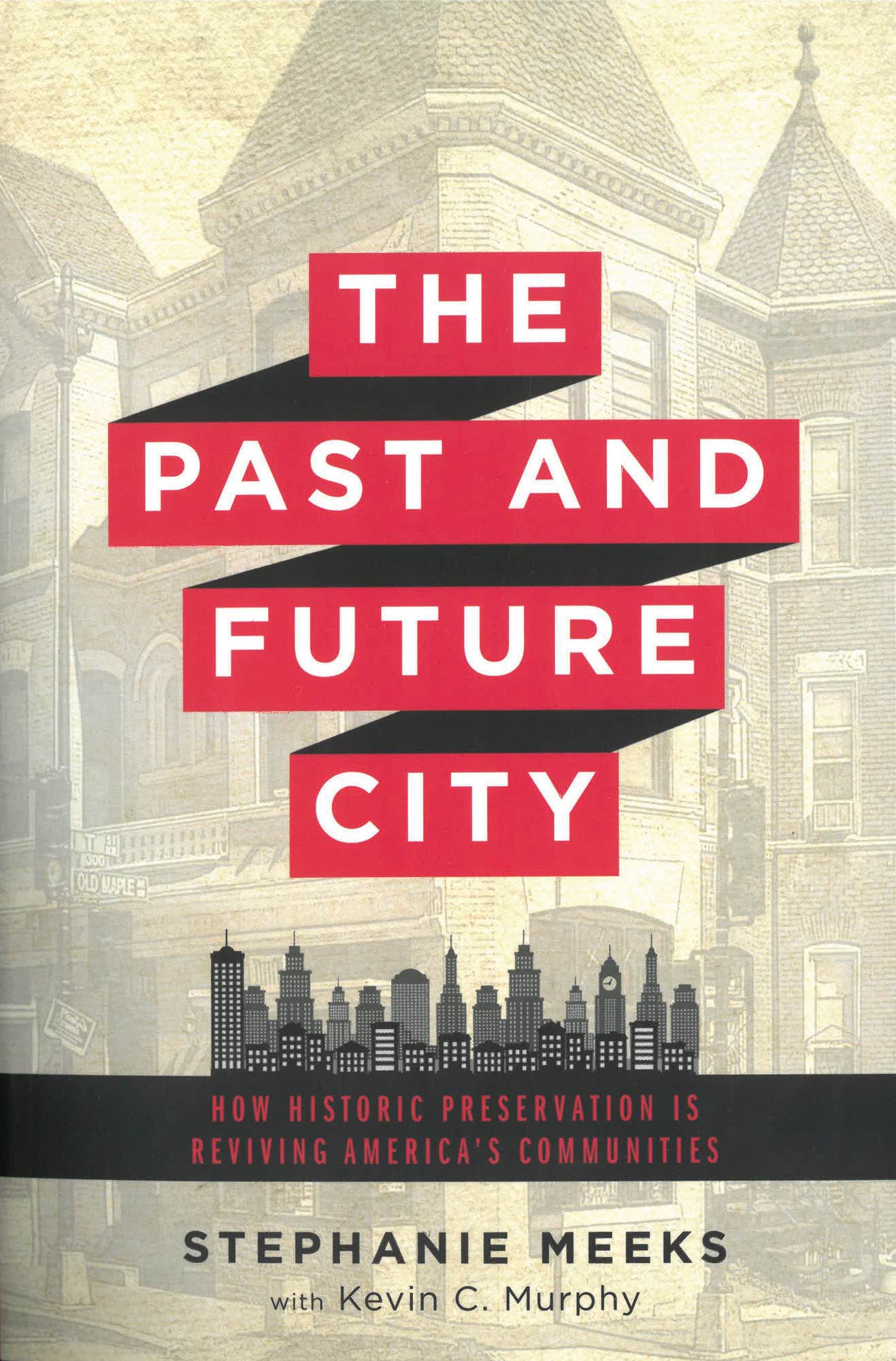
Features
The Past and Future City
The Past and Future City, How Historic Preservation is Reviving America’s Communities
By Stephanie Meeks with Kevin C. Murphy
Island Press, Washington, DC, 2016
352 pages; 11 photos, 15 illustrations.
With fervor and clarity, The Past and Future City highlights the significance of honoring the varied and vivacious history of America, and explains why and how the preservation of historic buildings and places is essential in the present and future world of urban planning.
Author Stephanie Meeks explores the power of place, various visions of the “ideal American city,” how older buildings enhance urban vitality, and looks ahead to imagine the effect historic preservation will have on climate change, the environment, and the future of liveable cities.
During Meeks’ tenure as president and chief executive officer of the National Trust for Historic Preservation, the organization has broadened its work to focus on the profound bond between older buildings and vibrant cities, while leading research demonstrating the benefits of historic preservation in today’s urban areas. One such benefit is the significant power that place can play in the lives of citizens—of all urban, suburban, and rural areas—across the country.
In the hierarchy of needs, the most powerful after physiological needs such as air, food, and safety is the feeling of belonging. This feeling can be found deeply intertwined within our culture, and Meeks contends in The Past and Future City that “old places speak to the need for belonging in a way that little else can.” She points out that such places give us the chance to feel a connection to others, to the broader community of human experience, and convince us that the lives we lead are meaningful—that what we do often has a direct and consequential impact on the future.
In The Past and Future City, Meeks explains that emotional and personal connections with places are necessary in order for people to find psychological balance, and that these connections give people the feelings of support, groundedness, and security they often need in this perpetually changing world.
It is these powers of place that have led Meeks to the work of historic preservation. “Saving places that define a community so that future generations can know their past, feel a connection to those who came before, and build a foundation for the future—is the heart of historic preservation,” she states.
While acknowledging that the soul of a place is what makes it special in a society, Meeks not only commends the substantial role of historic preservation in the revival of America’s cities, she also candidly and clearly analyzes the challenges preservation often faces—challenges such as gentrification, elitism, and wistful nostalgia.
In The Past and Future City, Meeks ponders what makes a building become loved, and was met with a succinct and meaningful answer: age. The longer a building ages, the more respect and fondness a society may have for its conspicuous maturity, for the accumulated human investment it displays, for the charming patina it bears. She contends that people love old buildings. They love their character, their history, and the sense of connection they provide—put simply, that power of place.
Looking to the past and present as evidence, Meeks also explores how old and historic places bring tourists to cities, which is significant, because tourism is the biggest industry in the world. It is the first, second, or third largest industry in every single American state. “Among cities with no particular recreational appeal, those that have substantially preserved their past continue to enjoy tourism…. Tourism does not go to a city that has lost its soul.”
In The Past and Future City, Meeks argues that historic preservation is not only important for the emotional sake of humans, but that it can and should play a significant role to ensure a more sustainable and environmentally friendly future for our planet. Throughout the book’s seven chapters, Meeks covers such topics as “Downtown Is For People: Competing Visions of the Ideal American City,” “Building Reborn: Keeping Historic Properties in Active Use,” and “The Greenest Buildings: Preservation, Climate Change, and the Environment.” She uses both anecdotal case studies—on topics such as suburban sprawl—and informative graphics, charts, and historical photos to explain how preservation can enrich cities across America in a way that is both practical and sustainable.
Though climate change has added urgency to preservation efforts, the concept that older and historic buildings have a major role to play in creating greener, more sustainable communities is not new. In 1980, the National Trust had a poster that showed a building in the shape of a gasoline can that read, “It takes energy to construct a new building—it saves energy to preserve an old one.” The poster explained why preservation is so fundamentally important to our future health and well-being.
Throughout the book, Meeks’ tone is informative, passionate, urgent, and hopeful. Historic preservation is one of the most intriguing aspects of restoring communities of all sizes, and understanding, caring for, and improving unique heritages is what makes these special communities come truly alive. In The Past and Future City, Meeks presents her case in a way that is coherent, rooted in exhaustive economic data and observational evidence, and provides us with an eager and enthusiastic perspective of the future of city building.
Kristin Hopf is freelance writer based in Philadelphia.









